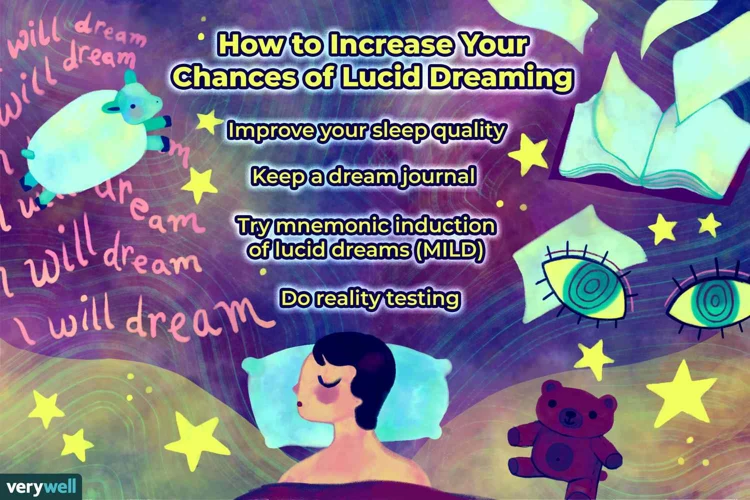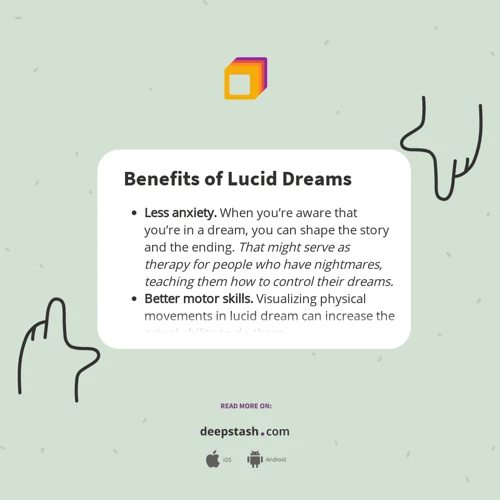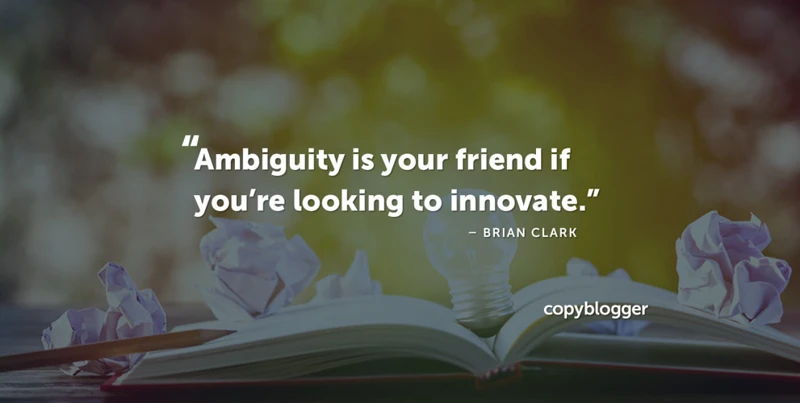Unlocking the vast depths of our imagination holds the key to untapped creativity, and one way to access this inner realm is through the practice of lucid dreaming. Lucid dreaming is a state of awareness within dreams, where the dreamer becomes conscious and can actively participate in shaping the dream. This extraordinary phenomenon has intrigued and captivated both scientists and artists alike, as it offers a unique opportunity to explore and enhance our creative abilities. In this article, we will uncover the connection between lucid dreaming and creativity, discover the benefits of utilizing lucid dreaming for creative pursuits, and delve into techniques that can help us unlock our imaginative potential. So fasten your seatbelts and get ready to embark on a journey into the fascinating world of lucid dreaming and creativity.
What is Lucid Dreaming?

Lucid dreaming is a remarkable phenomenon that occurs when an individual becomes aware that they are dreaming while still within the dream state. In lucid dreams, the dreamer is able to recognize that the events unfolding around them are not real, yet they remain consciously and actively engaged in the dream narrative. This heightened state of awareness within dreams offers a unique opportunity to explore and interact with the dream world in ways that are not possible in waking life. For many people, the realization that they are dreaming can be a thrilling and transformative experience. Lucid dreaming allows individuals to consciously control their actions, manipulate the dream environment, and even engage in conversations with dream characters. This extraordinary practice has captured the interest of scientists, psychologists, and creative individuals throughout history. It opens up a realm of possibilities for personal growth, problem-solving, self-reflection (source), and artistic inspiration. Many famous artists, writers, and musicians have attested to the profound impact of lucid dreaming on their creative process (source). The scientific study of lucid dreaming has also gained momentum, revealing fascinating insights into the brain activity and cognitive processes involved (source). Lucid dreaming is an exciting avenue for exploring the depths of our imagination and expanding the possibilities of our creativity.
The Connection Between Lucid Dreaming and Creativity

The connection between lucid dreaming and creativity goes beyond the realms of imagination. Lucid dreaming allows us to tap into the limitless potential of our mind and harness the power of our subconscious. When we become aware within a dream, we can actively shape the dream narrative, explore different scenarios, and experiment with ideas and concepts. This ability to create and manipulate within the dream world extends to our waking lives as well. Lucid dreaming serves as a training ground for our creative skills. By actively engaging with our dreams, we can enhance our ability to think innovatively, problem-solve, and generate new ideas.
One way lucid dreaming enhances creativity is through visualization exercises. In a lucid dream, we can vividly imagine and visualize any scenario, allowing us to practice and refine our creative visualization skills. This can be particularly beneficial for artists, writers, and performers who can mentally rehearse their craft and explore new artistic directions within the dream realm.
Another aspect of lucid dreaming that fosters creativity is the opportunity to experiment with ideas and concepts that may seem implausible or impossible in waking life. In a lucid dream, we can push the boundaries of reality, test different hypotheses, and explore unconventional approaches. This freedom to think outside the box and challenge our preconceived notions can lead to groundbreaking creative breakthroughs.
Engaging with dream characters can be a rich source of inspiration and creativity. Dream characters can serve as creative collaborators, offering valuable insights and perspectives. By interacting with dream characters in a lucid dream, we can have meaningful conversations, engage in artistic collaborations, or receive guidance from imaginary mentors. These interactions can ignite innovative ideas and expand our creative horizons.
The connection between lucid dreaming and creativity is deeply intertwined. Lucid dreaming provides a fertile ground for exploration, experimentation, and self-expression. It allows us to unlock our imagination, break free from limitations, and tap into the wellspring of our creative potential. By harnessing the power of lucid dreaming, we can unlock new dimensions of our creativity and experience a profound synergy between our dream world and waking life. So, get ready to unleash your creative spirit and dive into the enchanting world of lucid dreaming.
Benefits of Lucid Dreaming for Creativity

Lucid dreaming offers a multitude of benefits for enhancing creativity. One of the key advantages is the ability to directly tap into the subconscious mind, which is a treasure trove of creative ideas and insights. In a lucid dream, individuals can access and explore the depths of their imagination, allowing unique and innovative ideas to emerge. The dream world is free from the limitations and constraints of reality, enabling creative thinking to flourish (source). The control and agency that comes with lucid dreaming empowers individuals to actively experiment with various concepts and scenarios. This allows them to push the boundaries of their creativity and explore new artistic avenues. Lucid dreams also provide a safe environment for trying out different artistic techniques, honing skills, and practicing artistic expression without fear of judgment or failure (source). Additionally, lucid dreaming can enhance problem-solving abilities by providing a platform for individuals to tackle creative challenges from different angles, test out solutions, and gain new perspectives (source). The act of engaging with dream characters (source) and exploring the dream environment further stimulates the imagination and fosters creative thinking. By harnessing the unique capabilities of lucid dreaming, individuals can unlock the full potential of their creativity and pave the way for innovative breakthroughs in their artistic pursuits.
Techniques to Lucid Dream

There are several techniques that can help individuals induce lucid dreaming and unlock the doors to their imagination. These techniques aim to increase one’s self-awareness during dreams, making it easier to recognize that they are dreaming. Here are some popular methods to facilitate lucid dreaming:
1. Reality checks: Incorporate reality checks into your daily routine by regularly questioning whether you are dreaming or awake. This will create a habit of questioning reality, and eventually carry over into your dreams, triggering lucidity. Try simple reality checks like trying to push your finger through your palm, looking at a clock or text and then looking away, and then looking back to see if it has changed.
2. Mnemonic induction of lucid dreams (MILD): Before going to sleep, repeat affirmations such as “I will have a lucid dream tonight” or “I am aware in my dreams” to improve your chances of becoming lucid. Visualize yourself recognizing you are dreaming and imagine the sensations and experiences you desire to have in your lucid dream. This technique helps to program your mind to increase awareness during dreaming.
3. Wake back to bed (WBTB): Set an alarm to wake yourself up after about 5-6 hours of sleep. Stay awake for a short period of time, engage in activities related to lucid dreaming such as reading about it or jotting down dreams in a journal. Then go back to sleep with the intention of having a lucid dream. This technique takes advantage of the increased likelihood of entering a dream directly into Rapid Eye Movement (REM) sleep, the stage where most vivid dreaming occurs.
4. Lucid dreaming supplements: Certain supplements, such as galantamine or choline, have been reported to enhance dream recall and increase the likelihood of lucid dreaming. However, it is important to consult with a healthcare professional before using any supplements.
Remember, the key to successfully lucid dreaming lies in persistence and consistency. The more you practice these techniques, the higher your chances of experiencing vivid lucid dreams. Experiment with different methods and find what works best for you. Lucid dreaming opens up a world of immense creativity and self-discovery, so unleash your imagination and dive into the extraordinary realm of lucid dreams.
Developing Your Creative Skills in Lucid Dreams

Developing creative skills in lucid dreams is an exhilarating journey that allows individuals to unlock the full potential of their imagination. There are various techniques that can be employed to enhance and refine creative abilities while in the lucid dreaming state. Visualization exercises play a crucial role in this process, as dreamers can practice visualizing intricate details, vibrant colors, and imaginative landscapes, which can later be translated into artistic endeavors in waking life. Additionally, experimenting with ideas and concepts in lucid dreams enables individuals to explore unconventional concepts and push the boundaries of creativity without limitations. Dreamers can brainstorm and prototype new inventions, architectural designs, or even conceptual art pieces within the lucid dream environment. Engaging with dream characters can also foster creativity, as they can provide valuable insights and inspiration. By conversing with dream characters and seeking their perspectives, dreamers can gain new perspectives and tap into different facets of their own creativity. The infinite possibilities and freedom within the lucid dream realm make it an ideal space for honing creative skills and exploring the depths of artistic expression. Whether it’s through visualization exercises, idea experimentation, or engaging with dream characters, lucid dreaming offers a unique platform for creative growth and self-discovery.
1. Visualization Exercises
One powerful technique for developing creative skills within lucid dreams is through visualization exercises. Visualizing specific scenarios or objects within the dream can enhance our ability to imagine and create vivid mental images. Here are a few visualization exercises to try during lucid dreaming:
- Create a Dream Canvas: Imagine yourself standing in front of a blank canvas within the dream. With intention, start painting or drawing whatever comes to mind. Let your imagination run wild as you experiment with colors, shapes, and textures. This exercise allows you to tap into your artistic abilities and explore new artistic styles without limitations.
- Transform the Dream Environment: Use the power of visualization to transform the dream environment around you. Imagine yourself in a lush forest, a bustling city, or even a distant planet. Visualize and manifest the details of the new environment, including sounds, smells, and textures. This exercise not only enhances your visualization skills but also allows you to create immersive dreamscapes for exploration and inspiration.
- Summon Creative Mentors or Characters: Call forth dream characters who embody creativity or wisdom. These characters can be historical figures, fictional characters, or even your own artistic heroes. Engage in conversations with them, ask for guidance or advice, and observe their creative techniques. By interacting with these characters, you can gain valuable insights and inspiration for your own creative pursuits.
Visualization exercises in lucid dreams provide a platform for you to hone your imaginative abilities, explore new artistic techniques, and tap into the vast well of creativity within your subconscious mind. Remember to cultivate a sense of curiosity and playfulness as you engage in these exercises, allowing your creativity to flow freely within the dream space.
2. Experimenting with Ideas and Concepts
In the realm of lucid dreaming, the boundaries of reality are blurred, allowing for experimentation with unconventional ideas and concepts. One of the most exciting aspects of lucid dreaming is the ability to explore new possibilities and test out innovative concepts within the dream world. As a lucid dreamer, you have the freedom to step outside the limitations of the waking world and engage in creative experimentation.
One way to experiment with ideas and concepts in lucid dreams is through visualizations. Imagine yourself in a dream setting where you can visually manipulate objects, colors, and shapes. Visualize vivid scenes, surreal landscapes, and abstract imagery that aligns with your creative vision. Use the power of your imagination to create unique visual experiences and allow your mind to wander into uncharted territories.
Another method of experimentation is to actively engage with dream characters. Initiate conversations and ask them thought-provoking questions. Interact with dream characters who represent various aspects of your subconscious mind or even fictional characters from literature or movies. Seek their perspectives on different topics and discuss abstract ideas. Their responses may surprise you and provide valuable insights for your creative endeavors.
Additionally, you can use your lucid dreams as a platform for testing out new approaches, techniques, or artistic styles. Try out different painting styles, musical compositions, or dance moves in your lucid dreams. Practice your creative skills without the fear of failure or judgment. Use this opportunity to push the boundaries of your abilities and discover innovative ways to express your artistic vision.
To enhance the experience of experimenting with ideas and concepts in lucid dreams, it is helpful to keep a dream journal. Upon waking from a lucid dream, jot down your experiences, the ideas you explored, and any insights or inspirations gained. Documenting your experiences in a dream journal allows you to reflect on your creative experiments and provides a valuable resource for future creative projects.
By embracing the limitless possibilities of lucid dreaming, you can unlock your imagination and expand your creative horizons. Take advantage of this unique state of awareness to experiment with novel ideas, engage with dream characters, and explore new artistic territories. Lucid dreaming serves as a playground for creativity, where the only limit is your own imagination. So go ahead, dive into the depths of your dreamscapes, and bring your wildest ideas to life.
3. Engaging with Dream Characters
Engaging with dream characters is a captivating aspect of lucid dreaming that can greatly enhance our creative skills. When we become aware that we are dreaming, we also realize that the dream characters are projections of our own subconscious mind. They can serve as mirrors or representations of different aspects of ourselves, offering valuable insights and perspectives. By actively engaging with these dream characters, we can unlock a wealth of creative inspiration and self-discovery.
One technique for engaging with dream characters is to initiate conversations with them. This interaction allows us to tap into the wisdom and creativity of our own subconscious. Ask them questions, seek their guidance, and listen to their responses with an open mind. The answers they provide may surprise you and offer new perspectives that can fuel your creativity in waking life.
Another approach is to collaborate with dream characters on creative projects. For example, you can invite a dream character to co-write a story or create a piece of artwork together. Embrace their ideas and allow the collaboration to flow naturally. This not only stimulates your imagination but also helps you explore different creative styles and approaches that you may not have considered before.
Engaging with dream characters can also be an opportunity for personal growth and self-reflection. By interacting with different personalities and archetypes within your dreams, you can gain a deeper understanding of yourself and your emotions. This self-awareness can be channeled into your creative endeavors, adding depth and authenticity to your artistic expression.
Remember to approach dream characters with respect and curiosity. They are a product of your subconscious mind and can offer valuable insights if you approach them with an open mind. Through engaging with dream characters, you can unlock a plethora of imaginative ideas, unique perspectives, and personal growth, taking your creative abilities to new heights.
Exploring Your Inner World: Dream Journaling

Dream journaling is a powerful tool for delving into the depths of our inner world and harnessing the creative potential of our dreams. Keeping a dream journal involves recording our dreams immediately upon waking, capturing as many details as possible. This practice serves multiple purposes. First and foremost, it helps us remember our dreams more effectively, as dreams can quickly fade from memory upon waking. By writing them down, we create a tangible record that allows us to revisit and analyze our dreams later on. Dream journaling enables us to identify patterns, symbols, and recurring themes in our dreams, which can provide valuable insights into our subconscious mind. As we dive deeper into the habit of dream journaling, we may notice connections between our dream symbols and our waking life experiences, sparking new ideas and inspiration for our creative endeavors. The act of writing itself also helps solidify the dream memories in our minds, making them more readily accessible for reflection and exploration. To enhance the effectiveness of dream journaling, it is essential to have a journal or notebook dedicated solely to recording dreams. Keeping this journal by our bedside and making a habit of writing in it immediately upon waking can significantly improve our dream recall and facilitate a more profound understanding of our inner world. So, grab your journal and pen, and let the exploration of your inner world begin!
Overcoming Blocks and Creative Challenges

Overcoming blocks and creative challenges is an integral part of the creative process, and lucid dreaming can be a powerful tool for breaking through these barriers. When we encounter creative blocks in our waking life, it can be difficult to find new perspectives or innovative solutions. However, in the realm of lucid dreaming, we have the freedom to explore and experiment without the limitations of the physical world. One technique to overcome creative blocks during a lucid dream is to consciously visualize the challenge or problem we are facing (1). We can use the dream environment as a canvas for testing out different ideas, scenarios, and outcomes. By engaging our imagination and actively exploring various possibilities, we can spark new insights and approaches to our creative endeavors. Another effective technique in lucid dreaming is to experiment with ideas and concepts (2). We can use the dream world as a laboratory, where we can play with different artistic styles, alternate realities, or unusual combinations of elements. This experimentation can lead to surprising breakthroughs and inspire innovative approaches to our projects. Additionally, engaging with dream characters (3) can provide valuable insights and perspectives. Dream characters can serve as sources of inspiration, mentors, or collaborators, offering guidance and feedback on our creative work. By interacting with these dream characters, we can tap into the wisdom of our unconscious mind and gain new insights into our artistic processes. The boundless nature of the dream world, coupled with our conscious awareness, allows us to overcome creative blocks and find fresh inspiration in our lucid dreams.
Using Lucid Dreaming as a Source of Inspiration
Using lucid dreaming as a source of inspiration can be a powerful tool for igniting creativity and generating innovative ideas. In the lucid dream state, the dreamer has the ability to tap into the unlimited potential of their imagination. This heightened level of consciousness allows for the exploration of new concepts, perspectives, and possibilities that may not readily emerge in waking life. By intentionally directing the dream narrative and engaging with dream characters, individuals can actively seek inspiration and actively seek inspiration and insights within the dream world. For artists, writers, and creators of all kinds, lucid dreaming provides a unique platform to bring their ideas to life and experiment with different artistic styles and techniques. Within the confines of the dream world, there are no limits or boundaries, allowing for the exploration of unconventional and abstract concepts. Lucid dreaming can serve as a wellspring of inspiration, offering a vast playground where ideas can flourish and evolve. By harnessing this creative potential and incorporating the visions and experiences from lucid dreams into their waking lives, individuals can infuse their work with a unique perspective and originality. The possibilities are truly endless when using lucid dreaming as a source of inspiration, and it is up to each individual to explore and unlock the treasures hidden within the realm of their dreams.
Conclusion
In conclusion, lucid dreaming is a doorway to unlocking our imagination and amplifying our creativity. Through the practice of lucid dreaming, we can tap into a realm where the boundaries of reality dissolve, and we become the architects of our dreams. The connection between lucid dreaming and creativity is undeniable, as it offers us the opportunity to engage with our inner world in ways that are not possible in waking life. By utilizing visualization exercises, experimenting with ideas and concepts, and engaging with dream characters, we can enhance our creative skills within the realm of lucid dreams. Additionally, keeping a dream journal allows us to explore and record the depths of our innermost thoughts and inspirations. Overcoming blocks and creative challenges becomes easier as we delve into our dreams and draw from the wellspring of ideas that reside within. Lucid dreaming can also serve as a wellspring of inspiration for artistic projects and problem-solving in the waking world. The possibilities are endless when we harness the power of lucid dreaming as a tool for imaginative exploration and self-discovery. So, let your dreams take flight, embrace the power of your imagination, and unlock the creative potential that lies within the realm of your dreams.
Frequently Asked Questions
1. Can anyone learn to lucid dream?
Yes, anyone can learn to lucid dream with practice and dedication. While some individuals may naturally have more frequent lucid dreams, techniques and exercises can enhance the ability to recognize and control dreams.
2. Is lucid dreaming safe?
Lucid dreaming is generally considered safe for most individuals. It is a natural state that occurs during sleep, and there are no reported physical or mental health risks associated with lucid dreaming.
3. How can lucid dreaming benefit creativity?
Lucid dreaming can greatly benefit creativity by providing a platform for unlimited exploration and experimentation. It allows artists and individuals to actively engage with their imagination, test ideas, and gain inspiration from the rich and vivid dream experiences.
4. Can lucid dreaming help with problem-solving?
Yes, lucid dreaming has been found to aid in problem-solving. Since the dream environment can be manipulated and controlled, it allows individuals to visualize and explore potential solutions to real-life challenges in a safe and imaginative way.
5. Are there any techniques to induce lucid dreams?
Yes, there are various techniques that can be used to induce lucid dreams, such as reality checks, keeping a dream journal, practicing meditation and visualization, and using lucid dreaming aids like reality testing apps or binaural beats.
6. Can lucid dreaming improve memory?
Lucid dreaming has been linked to improved memory consolidation. During lucid dreams, the brain is actively engaged in the creation and interpretation of the dream scenario, which can enhance the encoding and storage of memories.
7. What can I do to prolong a lucid dream?
To prolong a lucid dream, it’s important to stay calm and focused. Engage your senses by touching objects or rubbing your hands together. Spinning in the dream environment or interacting with the dream scene can also help maintain lucidity and extend the dream.
8. Can lucid dreaming help develop artistic skills?
Yes, lucid dreaming can help develop artistic skills. By actively participating in the dream world and experimenting with different creative ideas, artists can hone their visualization abilities, unlock new perspectives, and refine their artistic techniques.
9. Is lucid dreaming the same as astral projection?
No, lucid dreaming and astral projection are two distinct experiences. Lucid dreaming involves becoming aware and conscious within a dream state, while astral projection refers to an out-of-body experience or the sensation of leaving the physical body to explore other realms.
10. Can lucid dreaming be learned through online courses or books?
Absolutely! There are numerous online courses, books, and resources available that can teach techniques and provide guidance for learning and improving lucid dreaming skills. These educational materials can be valuable tools in unlocking the potential of lucid dreaming and creativity.








